Documentary Review: “Empire of Dreams: The Story of the STAR WARS Trilogy’
Empire of Dreams: The Story of the Star Wars Trilogy (2004)
Directed by: Kevin Burns, Edith Becker
Written by: Ed Singer
Starring: Robert Clotworthy (Narrator), George Lucas, Gary Kurtz, Walter Cronkite, Mark Hamill, Carrie Fisher, Harrison Ford, Alan Ladd Jr., Steven Spielberg, Irvin Kershner, Joe Johnston, Dennis Muren, Warwick Davis
Harrison Ford: There’s a princess with weird buns in her hair, a giant in a monkey suit or something, it was weird. It was very, very weird.
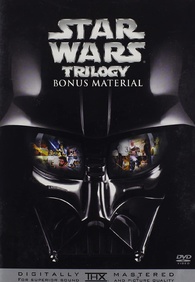
On September 21, 2004, Lucasfilm and 20th Century Fox Home Entertainment – the now defunct home video distributor for the film studio now known as 20th Century – released The Star Wars Trilogy, a multi-disc set that marked the debut of George Lucas’s original Star Wars Trilogy – Star Wars Episode IV: A New Hope, Star Wars Episode V: The Empire Strikes Back, and Star Wars Episode VI: Return of the Jedi – on the still newish DVD format.
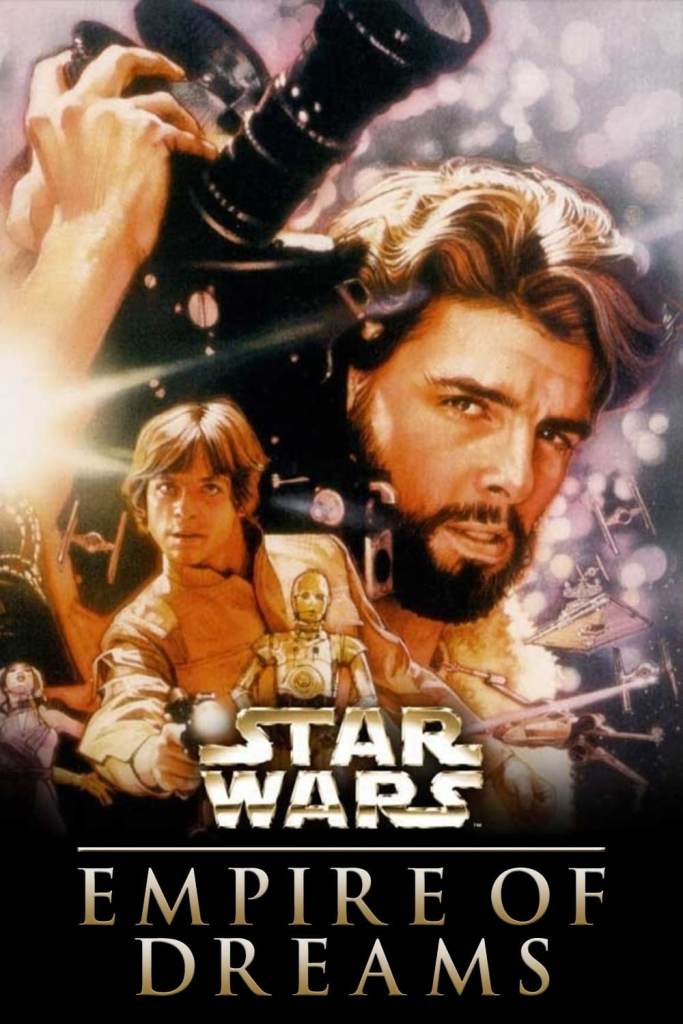
This release – which was one of the most anticipated DVD issues of the early 21st Century – is controversial in some quarters of the fandom because Lucas (who was still President and CEO of Lucasfilm and in the post-production phase of Star Wars Episode III: Revenge of the Sith) chose to digitally alter the 1997 Special Edition version of the Trilogy to make it more visually consistent with the Prequel Trilogy. (He also – rightly or wrongly – refused to include the original 1977-1983 theatrical release versions of the trilogy in this initial DVD release.)

The Star Wars Trilogy box sets came in three variants: a silver-black four-disc set with the Widescreen versions of Star Wars, The Empire Strikes Back, and Return of the Jedi and a bonus disc; a gold-black four-disc set with the Fullscreen (pan-and-scan) editions of the feature films and the bonus disc; and a three-disc set with just the films.

I own the silver-black Widescreen set; it was a gift from my late mother (she gave me the money for its purchase when I pre-ordered it on Amazon in March of 2004 a few days after my 41st birthday), and it’s still one of the keystones of my DVD collection, although I don’t watch them as much as I used to now that I have the entire nine-film saga on 4K UHD and “regular” Blu-ray discs.


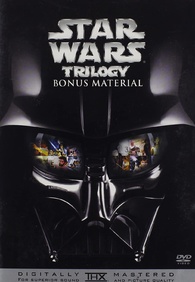
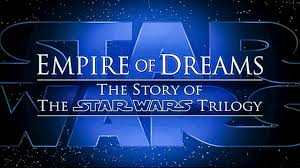
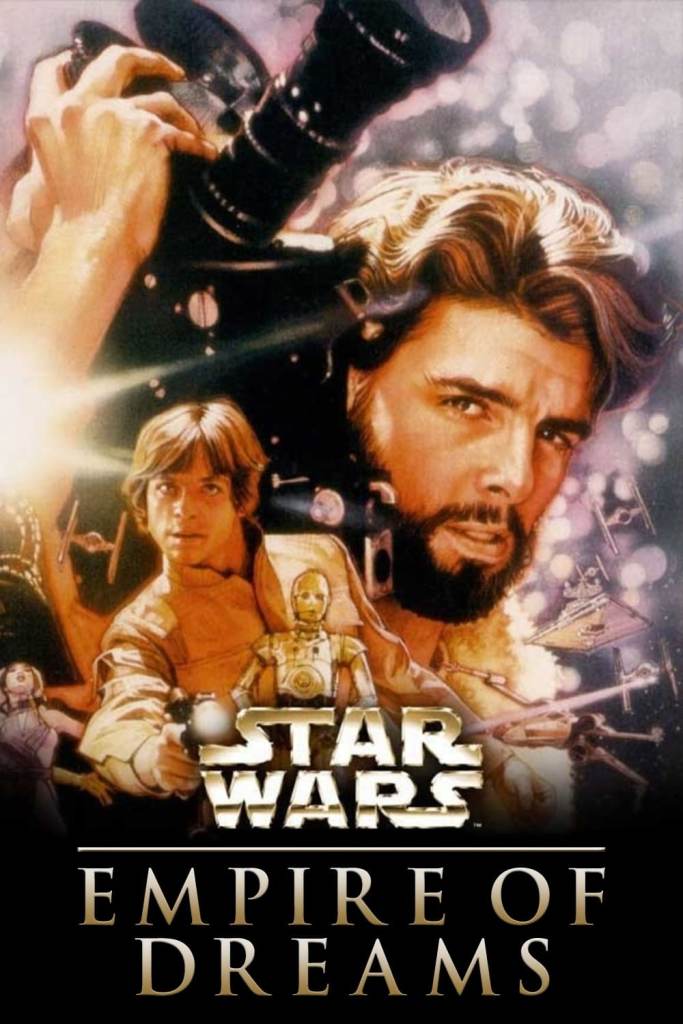
Poster art by Drew Struzan
(C) 2004 20th Century Fox Home Entertainment and Lucasfilm Ltd.
Just as I did when I bought Lucasfilm/Paramount Home Entertainment’s Indiana Jones: The Complete DVD Adventures in 2003, the first disc I watched from The Star Wars Trilogy set was the Bonus disc, and the first thing I watched was Kevin Burns and Edith Becker’s Empire of Dreams: The Story of the Star Wars Trilogy.
Although the A&E cable network aired a 90-minute version of Empire of Dreams on September 12, 2004 (nine days before the box sets were released), the Bonus disc contains the full 150 minute cut of the documentary.
Written by the prolific Ed Singer (who apparently specializes in behind-the-scenes documentaries about TV shows, movies, and actors) and co-directed by the late Kevin Burns (no relation to Ken Burns) and Edith Becker, Empire of Dreams mixes archival film from the 1970s and 1980s with contemporary interviews with many of the people who worked on the making of the first three Star Wars films both in front of and behind the camera. Other interviewees include journalists Walter Cronkite and Bill Moyers, Professor Leo Braudy of the University of Southern California (George Lucas’s alma mater), and director/producer Steven Spielberg, one of Lucas’s close friends and creative collaborator on the Indiana Jones film series.
Empire of Dreams covers – more or less – a 12-year period between 1971 (when Lucas started thinking about making a space-fantasy adaptation of Alex Raymond’s Flash Gordon comic strip or something like it) and the release of Star Wars Episode VI: Return of the Jedi in May of 1983. It starts with a quick look at the socio-cultural environment of the 1970s, a decade full of turmoil, violence, and cynicism, as well as an examination of how Hollywood films – including science-fiction movies such as The Andromeda Strain, Silent Running, and Logan’s Run – reflected the times with stories full of “doom and gloom” and “anti-heroes” instead of old-school heroic characters played by John Wayne, Errol Flynn, and Audie Murphy.
The documentary then follows the development of what Lucas originally called The Star Wars from an embryonic story treatment featuring Luke Starkiller, an evil general named Darth Vader, a “Kaiburr” crystal, and a pair of bickering robots based on two Japanese peasants in Akira Kurosawa’s The Hidden Fortress to the difficult production of the 1977 classic, now retitled as Star Wars. (Lucas explains that he always intended for the film to be released with the Episode IV subtitle, but that 20th Century Fox, which financed the movie, objected to it because no other Star Wars films existed and that audiences would be confused if the main title read Star Wars Episode IV: A New Hope.)
A large chunk of Empire of Dreams’ running time is devoted to Lucas’s struggle to get his movie made and his creation of what today is one of the biggest film studios in Hollywood: Lucasfilm Ltd. Founded by Lucas in 1971 but now owned by The Walt Disney Company, Lucasfilm was a small independent film company with only two major theatrical releases under its belt: THX-1138 (1971), a modestly successful sci-film set in Earth’s future, and the phenomenal hit comedy American Graffiti (1973), a “warm and fuzzy” comedy based on Lucas’s experiences as a teenager during the “cruising” fad in early 1960s Southern California.
It was American Graffiti’s success at the box office that convinced Alan Ladd Jr., then the head of production at 20th Century Fox, to finance Star Wars after Universal Pictures and United Artists – the two studios which contractually had “first crack” rights to Lucas’s “space movie” – turned it down because they didn’t think science-fiction was a hot enough genre in the late 1970s.
Ladd, whose father had been an iconic screen star in the Forties and Fifties, was instrumental in the eventual success of the Star Wars franchise. He recognized that Lucas, who was in his early 30s at the time, was talented and smart, but he, too, worried about Star Wars’ prospects at the box office. Like many people at Fox’s corporate headquarters in Burbank, he didn’t understand the script and was concerned that Lucas wanted to cast three mostly-unknown actors in the three main heroic roles: Mark Hamill, Carrie Fisher, and Harrison Ford.
Narrator: Lucas’ decision to hire unknowns went against the advice of his friend Francis Ford Coppola, who had cast “The Godfather” with stage and screen stars. 20th Century Fox was also concerned about Lucas’ choice of actors.
Alan Ladd Jr. – Former Studio Chief, 20th Century Fox: He came and said, “These are the three unknown people I want to go with.” I figured we’ve gone down this far in the road; he knows what he’s doing. I’d be lying if I said “Oh, my God. Harrison’s perfect, Carrie is perfect, and Mark is fantastic.” No, I was very nervous about the cast.
Narrator: For the important role of aged Jedi Master Obi-Wan Kenobi, Lucas recognized that he needed an established star. Sir Alec Guinness was a veteran of over forty films and had won an Oscar in 1958 for his performance in “The Bridge on the River Kwai”. The knighted actor had the pedigree and the persona.
Gary Kurtz – Producer: The Alec Guinness role required a certain stability and gravitas as a character, which meant we needed a very, very strong character actor to play that part.
Narrator: Signing Guinness was a major coup. But more casting would be done in London, where “Star Wars” would be principally produced. Unlike Lucas’ home base of Northern California, London provided access to the kind of massive soundstages needed for [the movie’s] ambitious sets. The location also gave Lucas access to Britain’s top production talents.
Empire of Dreams chronicles the professional and personal challenges Lucas faced while making the first Star Wars film, including his battles with his British camera team – led by director of photography Gilbert Taylor – and the board of directors at Fox:
Mark Hamill: The things that stick in my mind and make me laugh were, like, memos worried about whether or not the Wookie should have pants. They’re looking at this thing and saying, “Couldn’t he have some lederhosen?” This is great. Of all the things to worry about, the Wookie has no pants.
Of course, 21st Century audiences – who now have three Star Wars film trilogies, two standalone Anthology films, and several animated and live-action television series to enjoy – know that Lucas’s determination, artistic vision, and business savvy prevailed, and that the band of rebel filmmakers he assembled over 40 years ago coalesced into the successful Lucasfilm Ltd. that is now one of Disney’s busiest divisions. The original Star Wars film – “that space movie,” as skeptics in Fox’s board of directors called it – became the biggest box office hit of the time, and Lucas – through a brilliant bit of negotiation that gave him (and Lucasfilm) all of the rights to movie and TV sequels, as well as merchandising rights – became financially successful enough to “become free of the studio system” and self-finance The Empire Strikes Back and Return of the Jedi, the creation of which is also covered well in Empire of Dreams.
My Take
Narrator: For the part of Chewbacca, Han Solo’s towering Wookie co-pilot, Lucas and Kurtz had to look outside normal casting channels. But at 7’3″ tall, it was no stretch for Peter Mayhew, who had been working as an orderly at a Yorkshire hospital.
Peter Mayhew: I sat down on one of the sofas, waiting for George. Door opened, and George walked in with Gary behind him. So, naturally, what did I do? I’m raised in England. Soon as someone comes in through the door, I stand up. George goes “Hmm…”, virtually turned to Gary, and said, “I think we’ve found him.”
Empire of Dreams: The Story of the Star Wars Trilogy is a fascinating – if perhaps a bit uncritical – look at how writer-director George Lucas conceived the Original Trilogy (or OT, in Star Wars fan shorthand) in a time when America was still traumatized by the events of the 1960s and 1970s; the shadows of the Kennedy-King assassinations, Vietnam, the Civil Rights struggle, Middle East strife, and Watergate loomed large not just in the news but in the culture at large when Lucas and his fellow “New Hollywood” filmmakers were starting out in the business.
As written by Ed Singer, the film directed by the late Kevin Burns (he died in September of 2020 of cardiac arrest at the age of 65) and Edith Becker is informative and full of revealing anecdotes about the creation of Star Wars, The Empire Strikes Back, and Return of the Jedi from many of the movies’ cast and crew members, as well as commentary by academics, social observers, and journalists.
Carrie Fisher: [about the scene of Luke and Leia swinging across the chasm via rope] That was really early on in the shoot when I was still worried about my weight, and I thought that we were going to miss and I’d hit the wall and they would say, “Nah, still too tubby. Let’s bring in Jodie Foster.”
My favorite interviews are those with Lucas, Mark Hamill, Harrison Ford, James Earl Jones, Carrie Fisher, Irvin Kershner, Anthony Daniels, Peter Mayhew, and Kenny Baker. Many of those participants, especially Fisher, Kershner, and Mayhew, have died in the years since Empire of Dreams was made, so it’s really nice to see that their memories of how they became part of the Star Wars saga are preserved in this documentary.
Anthony Daniels: I was there for a while and then I thought, well nearly time to go. And then, kind of over George’s shoulder, I saw a painting. And the most extraordinary thing happened. It just struck me because I kind of looked at this face, and the face looked back at me. We had the most extraordinary eye contact you know; he’s looking right out of the picture. And he seemed to be saying, “Come. Come. Be with me”, and the vulnerability in his face made me want to help him. Isn’t that weird? He just looks utterly vulnerable. That painting completely changed my attitude to the whole project. Years later, I was able to go to Ralph McQuarrie and say, “You realize this is all your fault?”
As enjoyable as Empire of Dreams: The Story of the Star Wars Trilogy is, the documentary is far from perfect.
Let’s face it. If you are commissioned by two big corporations – Lucasfilm, which in 2004 was still owned by its founder, George Lucas, and 20th Century Fox – to do a behind-the-scenes film to accompany a new home media release, you don’t do certain things, such as interview Lucas’s ex-wife Marcia (who is seen in archival footage from the mid-1970s) or Dave Prowse (the bodybuilder and sometime actor who physically played Darth Vader in the Star Wars Trilogy but was banned from Lucasfilm events after several disputes between Prowse and the company).
Of course, if you are a documentarian who is making a semi-official film history about how one of cinema’s most popular and culturally influential trilogies was made and wants to have a man like George Lucas cooperate, you have to go with the flow and let him tell you his version of the story. So if Lucas says on camera that there was a huge screenplay with most of the trilogy’s story in it and that he had to divide it into three separate films, you don’t say, “Er. Mr. Lucas, sir. That’s not entirely true.”
I mention this because Lucas’s narrative that he already had worked out most of the trilogy in outline form as early as 1976 simply doesn’t make sense. He might have had a vague idea about Luke Skywalker’s overall story arc, but most of what I have read about the production of The Empire Strikes Back and Return of the Jedi – especially the development of the scripts to those films – contradicts Lucas’s story.
Carrie Fisher: You’re not really famous until you’re a Pez dispenser.
Other than that, I like Empire of Dreams: The Story of the Star Wars Trilogy a great deal. The funniest comments are, unsurprisingly, from the always irreverent Carrie Fisher, whose untimely death in 2016 affected the direction of Star Wars Episode IX: The Rise of Skywalker, a Sequel Trilogy film that was originally conceived to be her character’s swan song. Fisher loved her role as Princess Leia and was not so insecure about herself that she couldn’t laugh at herself. As she does in the audio commentaries in the Star Wars Trilogy DVDs, the late actor not only reveals how much fun she had in making the films, but also has some wonderful comedic observations about being “Princess Leia.”
Carrie Fisher: We signed away our likeness so when I look in the mirror, I have to pay George a couple of bucks.
Harrison Ford, one of the cast members who is hardest to corral for interviews, also has quite a few interesting and humorous comments about acting in Star Wars films:
Harrison Ford: I think George likes people, I think George is a warm-hearted person, but… he’s a little impatient with the process of acting, of finding something. He thinks that something’s there. “It’s right there, I wrote it down. Do that”. You know, sometimes you can’t just “do that” and make it work.
Although Lucasfilm did not port over Empire of Dreams: The Story of the Star Wars Trilogy to any of the later releases of the Star Wars Trilogy on Blu-ray, Disney+ subscribers can see a version of the documentary as part of the streaming service’s collection of Star Wars content. I don’t know if the version there is the 90-minute version that aired on A&E or the longer one in the 2004 DVD, but it is on Disney+ if you are inclined to watch it.

Comments
8 responses to “Documentary Review: ‘Empire of Dreams: The Story of the STAR WARS Trilogy’”
Lots of interesting stuff!
LikeLiked by 1 person
Absolutely!
LikeLike
20th Century Fox is no more?
LikeLiked by 1 person
The studio exists. It is no longer part of 21st Century Fox, which Rupert Murdoch had spun off from “New Fox” a few years ago and put most of its assets for sale to the highest bidder.
After a bidding war with Comcast, The Walt Disney Company bought it in 2018 but the deal was not finalized until 2019. Sometime early this year the new company shed the Fox name,. Which is fine, because “20th Century” was the studio’s original name until it merged with Fox Films in the mid-1930s.
LikeLiked by 1 person
Oh. Wow, that iconic drum roll is no more?
LikeLiked by 1 person
The fanfare is still there.
It’s just the word “Fox” that is gone.
LikeLiked by 1 person
Ah, ok! *whew*
🙂
LikeLike
I miss Peter Mayhew, he seemed like such a good natured guy. I always enjoyed listening to his stories about the production of these films. I once heard from a reliable source there was a script going around Hollywood about the making of Star Wars that’s told from Mayhew’s perspective – and that it was really good and quite moving.
LikeLiked by 1 person